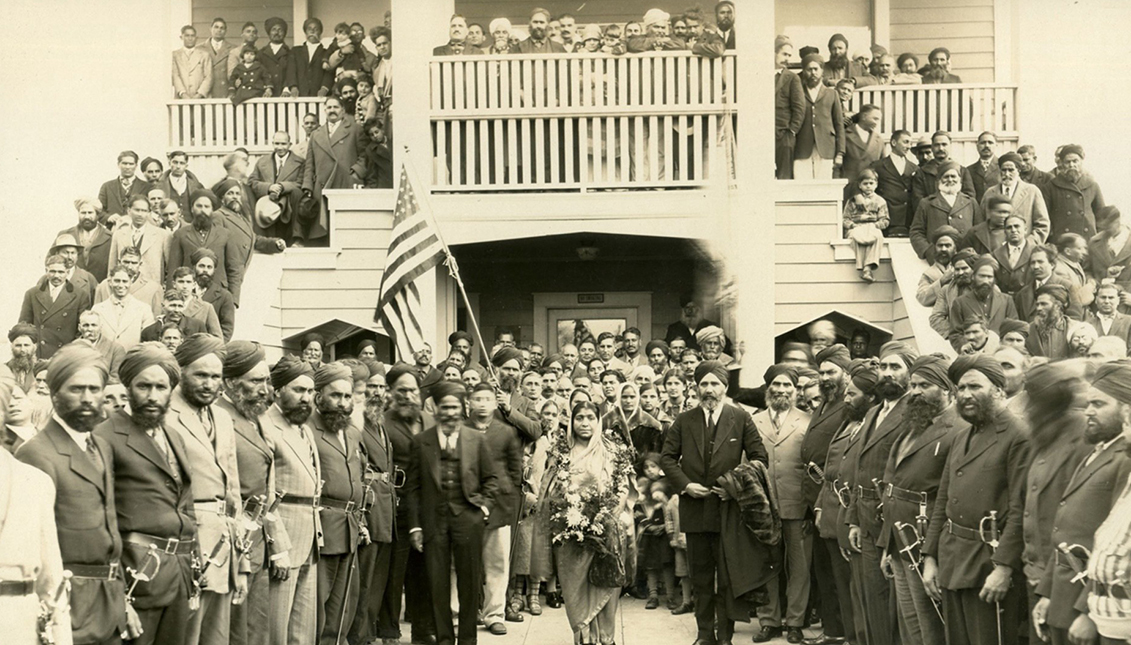
The Mexican Punjabis in California who turned quesadillas into a symbol of identity
Half a century before chefs made gastronomic "fusions" fashionable, Hindus and settled Mexicans faced segregation through the taste buds.
Sushi burritos, spaghetti-stuffed tamales... Nowadays, the most famous chefs on the planet are desperately trying to find the new hottest dish. But in the mid-50s, a California family from Yuba City, the Rasul's, came up with a revolutionary idea that made their restaurant famous: an original "roti quesadilla," also called the "Indian pizza."
This way, their restaurant, El Ranchero, became the epicenter of culinary fusion, serving dishes that mixed green chili, beans or Spanish rice with curry and typical Indian parathas.
Their intention was not to create something new, but to feed their clientele of Mexican Punjabis like themselves. Without intending to, they did much more than that: they managed to safeguard a culture that from the 1970s onwards was close to disappearing, according to Eater.
The beginnings of this crossbreeding, however, is way older.

From the late 19th century, remittances of men from Punjab in northwest India came to the west coast of the United States to work in tree-cutting or agriculture in California, often settling east of San Diego or making their way further north to settle in cities such as Yuba and Fresno.
However, two laws stood in the way of their desire to prosper in the country: In 1913, "foreigners without the option for citizenship," including Chinese, Japanese, Koreans, and Hindus, were prohibited from leasing or buying land in the U.S.
Later, in 1917, the Immigration Act restricted the entry of more Asians into the country, preventing these Punjabi farmers from bringing their families.
The "roti quesadillas," known as "Indian pizza," are the tasty legacy of a forgotten part of history.
According to Karen Leonard, professor of anthropology at the University of California in Irvine, nearly 2,000 Punjabi men lived in the state at the time in legal limbo, separated from their wives and children, and some of them chose to marry (or remarry) Hispanic women since marriage between people of different races was forbidden and Punjabis and Mexicans were considered "brown" alike.
RELATED CONTENT
This was the origin of a mestizo community known as "Mexican Hindus" or "Mexican Punjabis," whose children were also called "half and half."

When Gulam Rasul left his work in the fields to open El Ranchero (Rasul's) in Yuba with his wife Inez Aguirre Rasul in 1954, something had changed for the better in society: a few years earlier, in 1946, President Truman allowed the Indians to become citizens, making it easier for them to own land in their name. Also, the policies against mestizos were revoked and marriage was no longer subject to "races."
Inez and her 13 children - one of whom, Ali, took over after his father's death - took care of Gulam's restaurant that became a meeting place for the Mexican Punjabi community in Yuba. Since it was a Mexican restaurant where they also cooked Punjabi meals for their neighbors and friends, customers began to order beans or chili and eat them with 'parathas' (tortillas), merging two cultures in one meal.
After 1965, the immigration laws were softened and the new Punjabis who arrived in California preferred to marry Hindu women; they were much more purist, wanted to maintain their own traditions and culture at any cost and did not look kindly on the mestizaje of the Mexican Punjabis.
The "roti quesadillas," dubbed "Indian pizza" – with its melted cheese, shredded beef, and curried chicken sauce in a 'paratha'– was on El Ranchero's menu from the start, and was so unique that, despite the internal division between "veteran" Punjabis and newcomers, they endured four decades as the tasty legacy of a forgotten part of history.
A cultural crossbreeding, forced or not, reminds us that there is a ladder for every wall. Or maybe a curry burrito so spicy that the word "fusion" takes on a new and flamboyant meaning.











LEAVE A COMMENT: